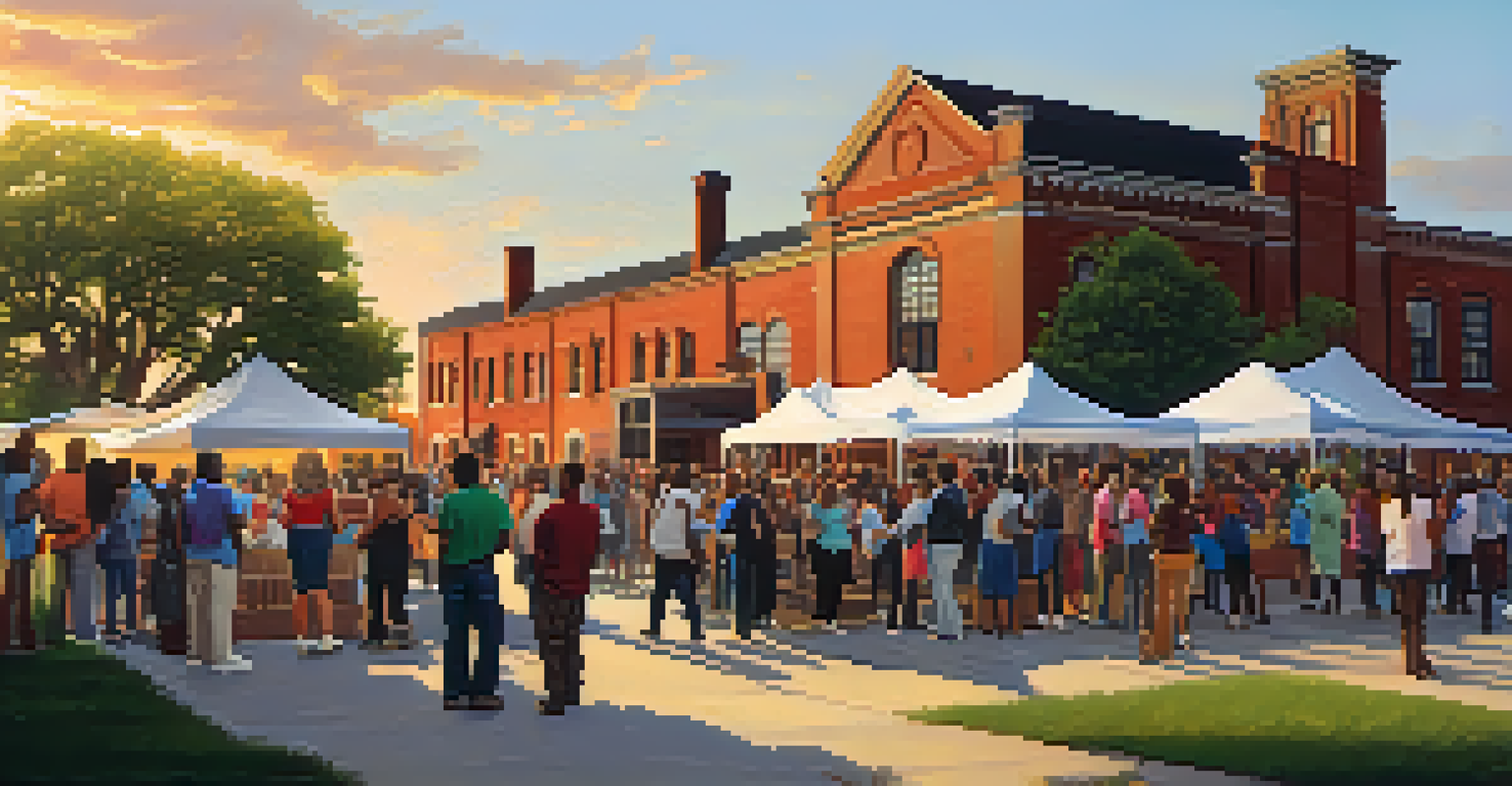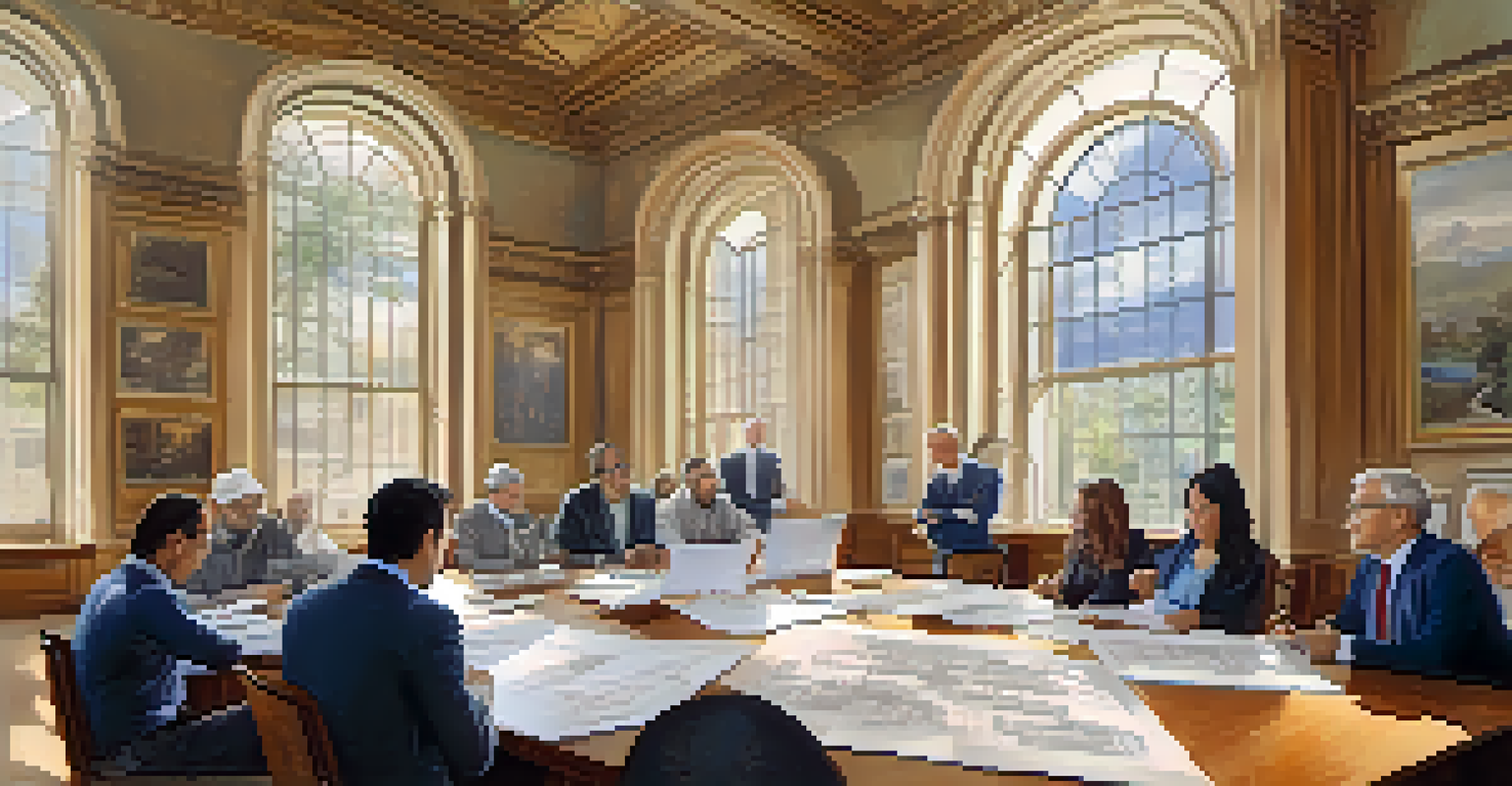Funding Challenges in the Restoration of Detroit's Historic Sites

Understanding the Importance of Historic Preservation
Historic preservation is crucial for maintaining a city's identity. In Detroit, these sites tell stories of resilience, innovation, and cultural heritage. They attract tourism, boost local economies, and foster community pride.
Preservation is not an act of desperation but an act of hope.
When we preserve historic sites, we also preserve memories and legacies that can inspire future generations. Think of these buildings as physical narratives that connect us to our past, much like family heirlooms hold sentimental value.
However, the importance of these sites often clashes with the practicalities of funding, leading to a constant struggle between preservation and urban development.
The Financial Landscape of Restoration Projects
Restoring historic sites in Detroit is a costly endeavor, often requiring millions of dollars. With limited budgets, local governments and organizations must prioritize which projects receive funding.

Funding usually comes from a combination of public and private sources, but it’s often insufficient. Grants, donations, and tax incentives can help, yet they do not always cover the full costs involved in restoration.
Preservation Boosts Community Identity
Historic preservation strengthens a city's identity by maintaining cultural heritage and fostering community pride.
This financial landscape creates a daunting challenge, as many sites remain at risk of deterioration without adequate funding.
Competition for Limited Funding Resources
In a city like Detroit, funding is a highly competitive arena. Numerous initiatives vie for the same pot of money, whether it's for education, infrastructure, or historic restoration.
Historic preservation is a catalyst for revitalization and economic development.
As a result, historic sites often struggle to gain the attention they deserve. It's as if each project is a contestant in a talent show, but only a few get the spotlight and the necessary resources.
This competition can lead to important sites being overlooked, while other projects, perhaps less impactful, garner the funds needed for their upkeep.
The Role of Community Engagement in Funding
Community engagement plays a pivotal role in securing funding for restoration projects. When local residents voice their support, it can significantly sway funding decisions.
Think of it as a grassroots movement where every voice counts. Engaged communities can rally support, raise awareness, and even contribute financially through crowdfunding efforts.
Funding Challenges for Restoration
Restoration projects face significant financial challenges, often competing for limited funding resources.
By fostering a sense of ownership and pride, communities can create a powerful narrative that emphasizes the importance of preserving their historic landmarks.
Challenges with Government Grants and Programs
Government grants can be a double-edged sword in the restoration process. While they provide essential funding, the application process can be lengthy and bureaucratic.
Many restoration projects struggle to meet the strict eligibility criteria, often leading to frustration. It's like trying to fit a square peg into a round hole; sometimes, the requirements just don’t align with the unique nature of a historic site.
This complexity can deter organizations from even trying, leaving potential projects stranded without the financial backing they need.
The Importance of Private Investments
Private investments can offer a lifeline for restoration projects. Wealthy individuals or corporations often look for opportunities to make a positive impact in their communities.
When these investors step in, they can provide the necessary capital to kickstart or complete restoration efforts. Their involvement can be akin to a superhero swooping in to save the day, revitalizing sites that might otherwise fade away.
Community Engagement Drives Support
Active community involvement is crucial for securing funding, as local support can sway funding decisions and awareness.
However, finding the right investors who share a passion for preservation can be challenging.
Innovative Funding Solutions for Historic Sites
To combat funding challenges, innovative solutions are essential. Strategies like social impact bonds or public-private partnerships are gaining traction in the restoration community.
These approaches can create new avenues for funding, allowing projects to move forward where traditional methods fall short. Imagine a collaborative effort where everyone contributes, much like a potluck dinner where each dish adds to the feast.

By thinking outside the box, Detroit can pave the way for more successful restoration initiatives.
Looking Ahead: The Future of Detroit's Historic Sites
The future of Detroit's historic sites hinges on overcoming funding challenges. With the right strategies in place, there’s hope for revitalization and preservation.
Engaging communities, attracting private investments, and navigating government programs effectively can transform the landscape of funding. It's like planting seeds; with care and attention, the city can blossom into a hub of cultural heritage.
Ultimately, the goal is to ensure that these historic sites continue to tell their stories for years to come, enriching the lives of both residents and visitors alike.